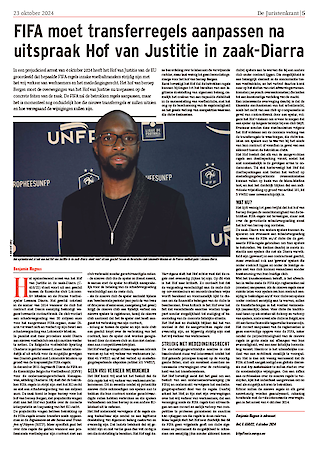In the Picture

No loyal customers for dominant companies
February 2016Imagine …
You are a key account manager at a successful company with top-quality products. Over the years, the company has built up a valuable and loyal customer database, conquering more than one-half of the market in the process. None of your competitors has a market share that even comes close.
During the annual contract negotiations, one of your key accounts announces that he received a very interesting proposal from one of your competitors. The customer would prefer to continue buying from you, but would like to see his loyalty rewarded. He is willing to purchase 90% of his goods from you if he is offered a nice discount in exchange.
You immediately recognize the interest of this proposal. Rather than a discount on invoice, you choose to give a bonus at the end of the year. After all, that way you can immediately verify whether the customer has kept his 90% promise. You decide to offer an end-of-the-year bonus that the key account is sure to jump at.
But before doing so, you forward the draft agreement to the legal department for a quick review. You do not expect any problems: the text is short and clear, and it all makes perfect sense commercially.
To your surprise, the lawyers hit the alarm bell. For them, offering this bonus in exchange for a commitment to buy 90% from you simply will not do.
You cannot understand what has gotten into those legal guys. Are they unable to see what makes this deal interesting? Do they really want to force you to offer the customer up on a platter to a competitor? Or do they know something you do not know?
A brief clarification . . .
Competition law provides specific playing rules for companies that have a dominant position. The rationale is that such companies do not experience the same competitive pressure on the market as their smaller competitors, and so there rests upon them a special responsibility not to abuse their dominant position.
A company with a market share of 30% or less is presumed not to have a dominant position. By contrast, a market share of 50% or more entails a presumption that dominance is present. These presumptions are rebuttable. The principle is that a market share of 40% or more calls for prudence. Whether a company is actually dominant depends on the specific characteristics of the market in question: the market shares of the remaining competitors, the stability of the market shares, possible barriers to entering the market, etc.
Because of its market position, a dominant company is often an indispensable trading partner. So, in order to give the smaller competitors a real chance, such a company may not offer any financial benefits that reward the loyalty of the customers.
What does a dominant company specifically have to take into account when offering financial advantages to its customers?
Discounts that a customer receives on condition that he be supplied exclusively or largely by the dominant company are problematic. The fact that it is the customer himself who proposes to place all or a large share of his orders with the dominant company is not regarded as relevant.
Also, bonuses that are attributed at the end of the year and which reward the customer for achieving a certain purchase volume or a postulated individual annual target are viewed with suspicion. After all, as the year advances, the pressure increases to keep on buying from the dominant company. The customer becomes less and less inclined to place his orders with smaller competitors, because in doing so he might miss out on his end-of-the-year discount or bonus.
However, a dominant company can still offer a genuine quantity discount. A customer who purchases a certain volume per order creates economies of scale for the dominant company. The latter can, for example, deliver a full pallet and organize just a single transport. A discount that reflects this kind of economies of scale remains possible. Real quantity discounts are standardized (and not individualized) discounts. They apply in the same way for all customers.
Nor do discounts in return for a real economic consideration constitute a problem. Customers who make special marketing efforts (for example, by participating in a trade fair), or who collect market information and pass it on to the supplier, may be rewarded for doing so.
Concretely . . .
If you want to offer financial benefits in order to bind the customer to you, you need to check whether your company holds a dominant position. As of a market share of 40% you have to be careful, and it would be prudent to ask for specialized advice.
If your company is dominant on a market, the following playing rules apply:
- Do not grant any discounts or bonuses in exchange for a commitment of the customer to supply himself (quasi-)exclusively from you, even if it is the customer himself who asks for it.
- Be aware that linking discounts or bonuses to the achievement of predetermined purchase volumes is not without risk. The customer´s choice of supply sources or trading partners might be limited as a result of this. This risk primarily exists as of a purchase volume that represents 50% or more of the customer´s total annual volume. It makes no difference whether the customer voluntarily accepts or even proposes this.
- Link discounts or bonuses to economies of scale that are realized thanks to the volume that is purchased per individual order, and apply this in the same way to all customers (standardized quantity discounts).
- Link discounts or bonuses to real considerations that are not primarily designed to bind the customers to you.











